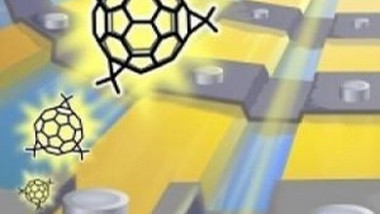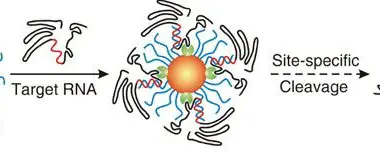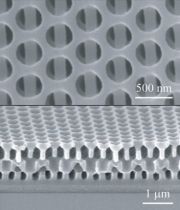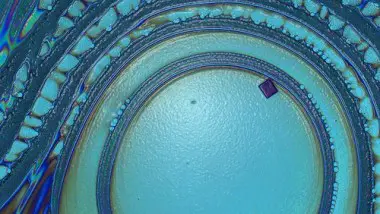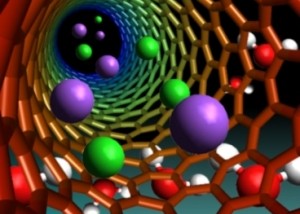C60 transistor illustration (Credit: Shachar Richter/TAU) Israeli researchers developed a transistor based on a single carbon-60 molecule. This technology could potentially lead to mobile devices with faster and larger memories and much lower power requirements. Even more importantly the new ...
Researchers Make Nanorobots that kills Hepatitis C
The nanozyme mechanism (Credit: University of Florida) Researchers from the University of Florida created a tiny particles that can be programmed to fight Hepatitis C and In laboratory tests have already demonstrated almost a 100 percent decrease in hepatitis C ...
New Methods in Tiny Technology
A 3D nanostructure with layers as seen by a Scanning Electron Microscope. Source: MIT A silk-based sensor patterned with nanostructures. Source: MIT Researchers at the Massachusetts Institute of Technology (MIT), in Cambridge, have recently devised a new method of creating ...
New Nanolithography Method
Dr. Chad Mirkin. Source: Northwestern University Scientists at Northwestern University in Evanston, Illinois have developed a new nanolithography method that quickly deposits or carves out nanostructures on a large surface. The new method can create arbitrary patterns using a series ...
Nanoparticle Magnets Conserve Rare Earth Metals
Professor George Hadjipanayis. Source: University of Delaware. Researchers at the University of Delaware and at General Electric Global Research are independently developing new magnets using nanoparticles to preserve the increasingly small supply of rare earth metals typically used in the ...
New Techniques for Solar Cells
Material on a block polymer film separating into segregated pockets. Source: Argonne National Laboratory. Scientists at Argonne National Laboratory in Illinois have developed an extension to atomic layer deposition techniques which could lead to improvements in solar cells and photonic ...
Nanoscale Transistors Probe Cells
Scientists from Harvard University recently introduced a unique method to probe interior cells. Their design consists of ultra-small wires and transistors, sensitive enough to respond to various biological changes, thus measuring biochemical elements. A new device, small enough to be ...
Pushing Ions Through Carbon Nanotubes
A research team from the Massachusetts Institute of Technology recently observed for the first time ever single ions traveling through a tiny carbon-nanotube channel. This achievement could lead to various industrial developments, including extremely sensitive detectors and new water-desalination system. ...
Nanofluidic ‘Multi-Tool’ Separates Nanoparticles
Researchers from the U.S. National Institute of Standards and Technology recently presented a newmethod to sort nanoparticles by size. The device used could help future scientists perform complex operations on the nanoscale level. A 3D nanofluidic “staircase” channel with many ...
Drugs Encapsulated in Nanoparticles
Scientists from the Massachusetts Institute of Technology recently introduced a new method to administrate drugs targeted at cancer cells. They have shown success in experiments involving patients with cancer, and their development could help administer other types of drugs. MIT ...

